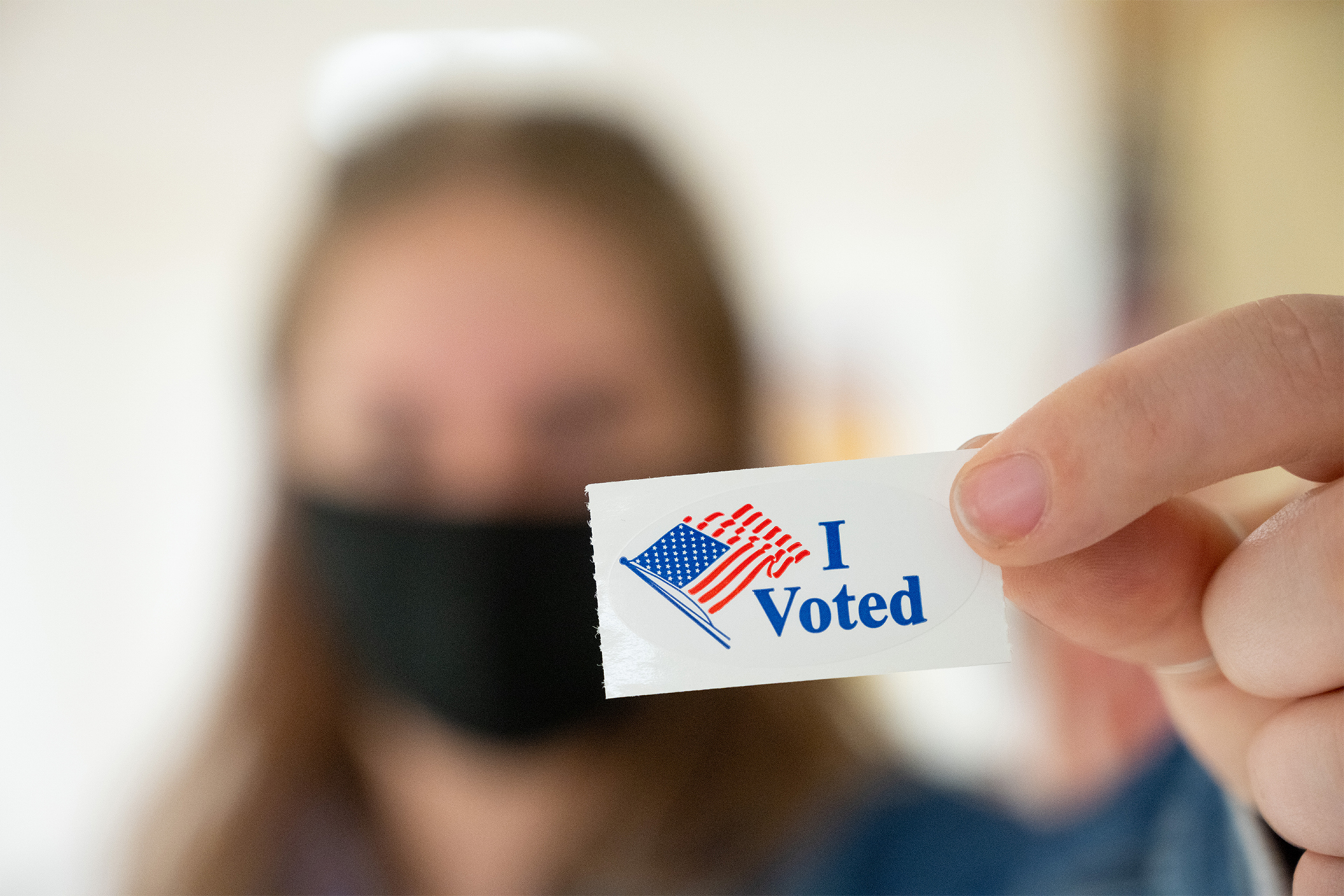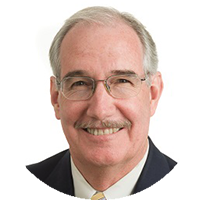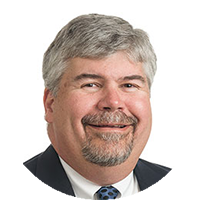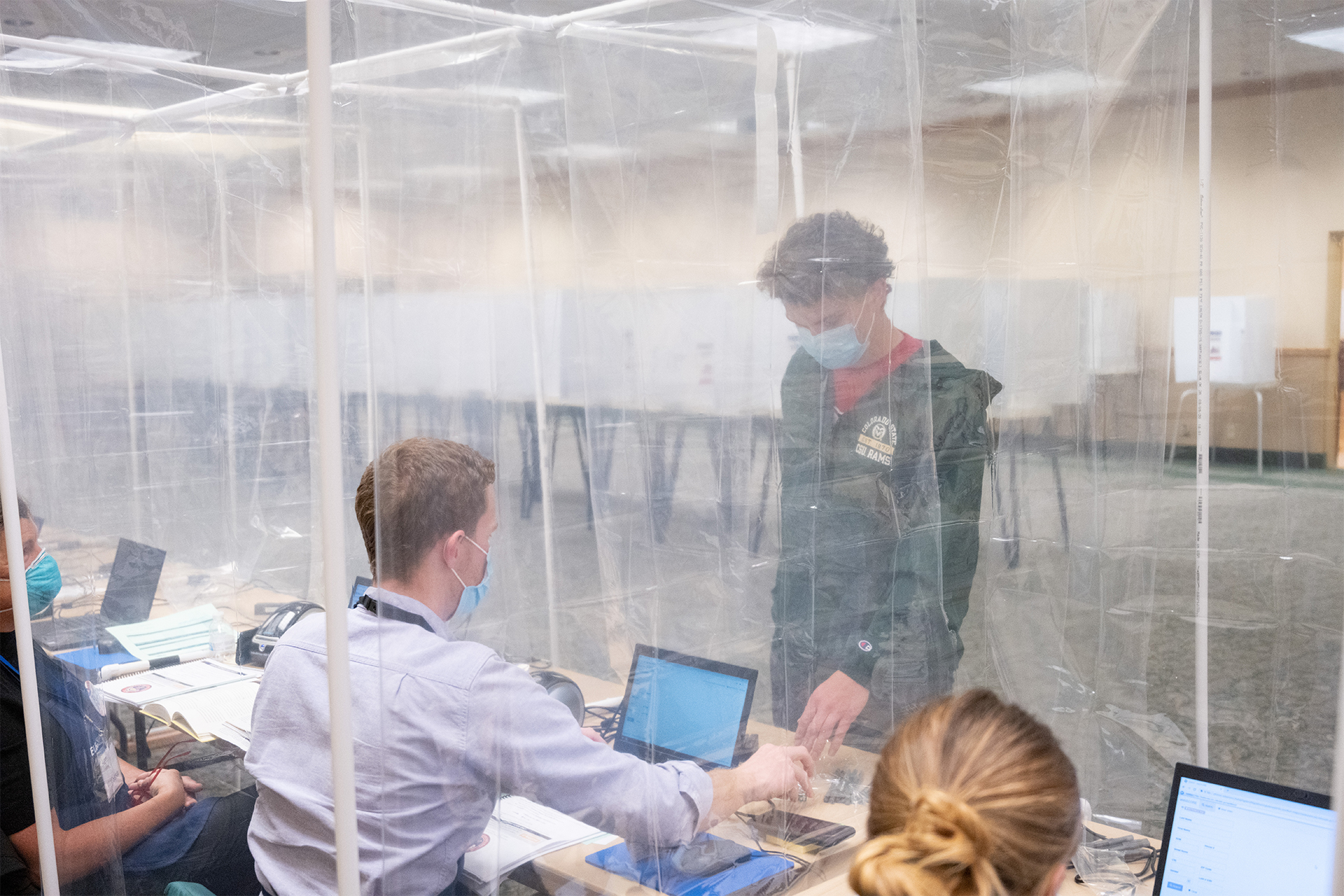
Photo by John Eisele/CSU Photos
It was a heady, volatile time for young adults in America in 1972.
Anger over U.S. involvement in the Vietnam War was growing daily. Protesters, fed up with the draft and seeking political and societal change, marched on college campuses and in major cities. Democratic headquarters at the Watergate Hotel were burglarized, leading to the biggest political scandal in American history to that time. And international tensions were high after 11 members of the Israeli Olympic team were killed by Palestinian terrorists at the Munich Games.
It also marked the first time that 18-year-olds were eligible to vote in state and federal elections, after the passage of the 26th Amendment to the U.S. Constitution. Dave McKelfresh, then a senior at Colorado State University, well remembers what it was like to cast his first ballot.
“Sherri (his future wife) and I both remember it well when we first had the chance to vote,” he said. “We were both seniors – she was an RA (resident assistant) at Ingersoll Hall, and I was hall president. I can’t remember which building we walked to – probably the Lory Student Center, but it might have been one of the academic buildings – but we both remember that day.
“It was our first time voting, and even though there weren’t a bunch of fireworks going off, it was very exciting – especially when so many others on campus were voting at the same time.”
McKelfresh, who has worked at CSU for 42 years and serves as executive director for assessment and research in the Division of Student Affairs, doesn’t recall seeing a polling place on campus prior to 1972. However, it appears that people have been voting on campus ever since – a stretch of at least 48 years.
“It really was a big deal when the voting age was moved to 18, and it was great to be able to vote on campus,” said McKelfresh, who earned a bachelor’s in political science and a master’s in education from CSU. “It was such a contentious time, with people marching for women’s rights, civil rights and to end the war. It was a big deal for young people to be able to vote and have their voices heard.”

“It really was a big deal when the voting age was moved to 18, and it was great to be able to vote on campus. It was such a contentious time, with people marching for women’s rights, civil rights and to end the war. It was a big deal for young people to be able to vote and have their voices heard.”
— Dave McKelfresh, CSU alumnus and executive director for assessment and research in the Division of Student Affairs
Focal point for politicians
CSU has been politically engaged in most subsequent elections, but really became a focal point for politicians when Colorado started to shift from a reliably Republican state – turning purple around 2008. Barack Obama made two visits to campus – the first just prior to winning the 2008 election, and a second in 2012 – and his wife, Michelle, gave a speech at the LSC in 2014.
CSU regularly hosts debates between candidates for state offices. Earlier this month, former Gov. John Hickenlooper and incumbent U.S. Senator Cory Gardner, a CSU alumnus, squared off in a televised senatorial debate.
“The energy and excitement that exists on campus when we have candidates actively campaigning creates a real sense of responsibility among students,” said Mike Ellis, executive director of the LSC. “That’s part of what a college campus should be – it’s pure responsibility to be engaged in the process.”
Ellis said voting has been held in the student center since at least 2006; the Colorado legislature eventually mandated that all college campuses host polling sites on campus. With the shift to all-mail voting in Colorado, CSU-Pueblo has an official drop box near the Fountain that is available to all Pueblo County residents as well as students to securely cast their ballots.
In Fort Collins, early voting has begun in the North Ballroom of the LSC and a ballot drop box is in place near the Transit Center on the north side of the building. Ellis is expecting the center to be a hot spot for election activity – even during the COVID-19 pandemic.
“Daily traffic is definitely down in the LSC,” Ellis said. “We’re averaging about 7,000 visitors per day, and in normal years it would be about 24,000 per day. But I suspect a lot of people will still be coming in to vote here.”
If tradition holds, they will. Ellis said more people vote in the LSC than in any other state polling place. And students are a big part of that number.
In 2016, the last presidential election, 68.9% of eligible CSU students voted. More than 84% of eligible student voters registered, and 81.9% of registered student voters cast their ballot.
“Our students, in general, are really engaged when it comes to elections,” Ellis said. “Voting is an important civic duty, and it’s become a big part of campus life.”

“Our students, in general, are really engaged when it comes to elections. Voting is an important civic duty, and it’s become a big part of campus life.”
— Mike Ellis, executive director of the Lory Student Center
Focus on get out the vote

Due, not doubt, to the impact of COVID-19, the atmosphere on the LSC Plaza is much calmer than 2016, when spirited debates between supporters of Donald Trump and Hillary Clinton were the daily norm. Ellis misses the usual energy … sort of.
“It’s fairly minimal this year, much to our chagrin, but we don’t want to promote gatherings during the pandemic,” he said. “There’s no doubt that the energy is missed, but I don’t miss some of the problems, either. There were days when we weren’t sure what the latest voting shenanigan would be.”
The CSU Pueblo Office of Student Engagement and Leadership has been focusing its efforts on voter registration, with nonpartisan booths set up around campus in partnership with the RockTheVote organization. SEAL has also been handing out information about voting deadlines and working with students who are registered in their home states to request absentee ballots.
Degan Bartels, president of the CSU Young Democrats, said despite the lack of face-to-face contact on the Plaza, students are very engaged and excited about this election. The organization had gone dormant after 2016 but Bartels helped resurrect the group via social media. It recently surpassed 1,000 followers on Instagram.
“There’s a very strong enthusiasm on campus; students are really engaged with climate policy and education policy,” he said. “It’s all about meeting them where they are, and that’s why we’re so strong on social media. Students have some of the dumbest reasons for not voting, so we’re helping to educate those on the fence and encourage them to get out and vote.”
Efforts to reach CSU Young Republicans were unsuccessful.
As for McKelfresh, he’s looking forward to continuing a tradition that began 48 years ago on campus.
“I was a political science major and have always believed that the civic responsibility of voting is a precious aspect of citizenship,” he said. “I have always encouraged people in our office and around campus to vote, and I’ll be taking my 92-year-old mother to vote. It means a great deal to me.”
To vote in Colorado you must:
- Be a U.S. Citizen.
- Be 18 years old on or before the date of the election. (Amendment 76 on this year’s ballot asks voters to modify this.)
- Reside in Colorado for 22 days before the election. If you have lived in Colorado since Oct. 12, 2020, you are eligible to vote in this year’s Nov. 3 election.
In Colorado, you can register to vote and vote in person up to 7 p.m. on Election Day.
More information on the Colorado election process can be found at the state Secretary of State’s Go Vote Colorado webpage.
You have two ways to vote on the Colorado State University campus:
- 24/7 ballot drop box located outside the Lory Student Center, just outside the Transit Center.
- Vote in-person in the Lory Student Center North Ballroom
- Mon. – Fri., 10/19 – 10/30 (8 a.m. – 5 p.m.)
- Sat. 10/31 (8 a.m. – 5 p.m.)
- Mon. 11/2 (8 a.m. – 5 p.m.)
- Tue. 11/3 Election Day (7 a.m. – 7 p.m.)
To find out more about how to become more involved and increase your civic engagement, go to the SLiCE Civic Engagement webpage.